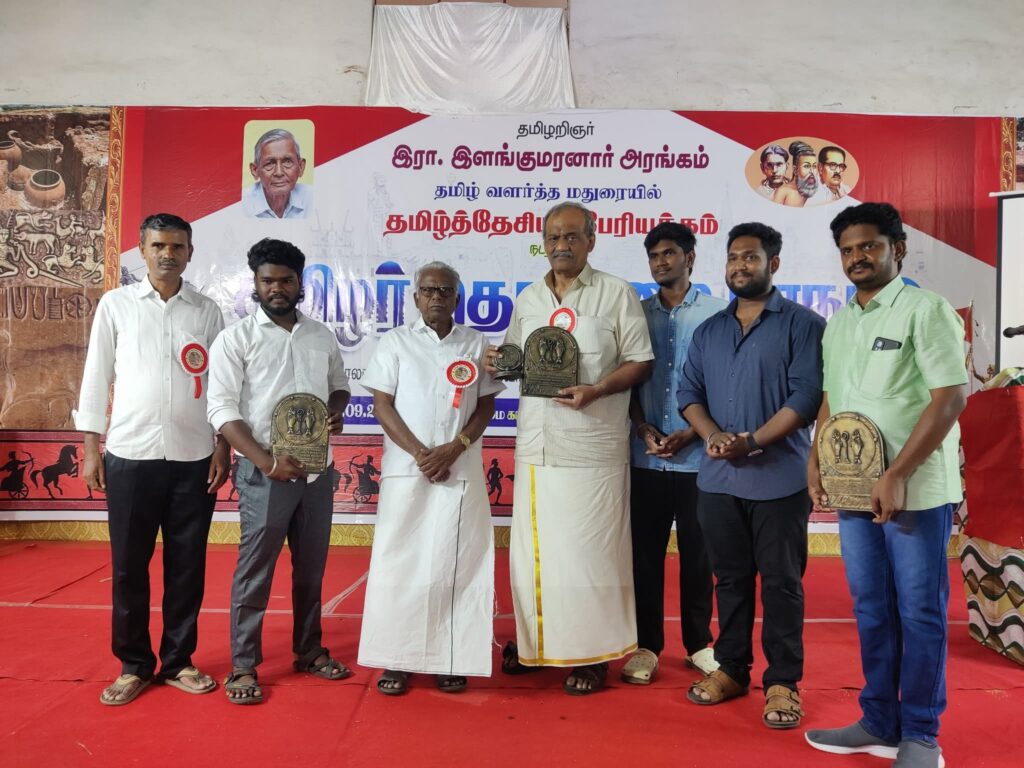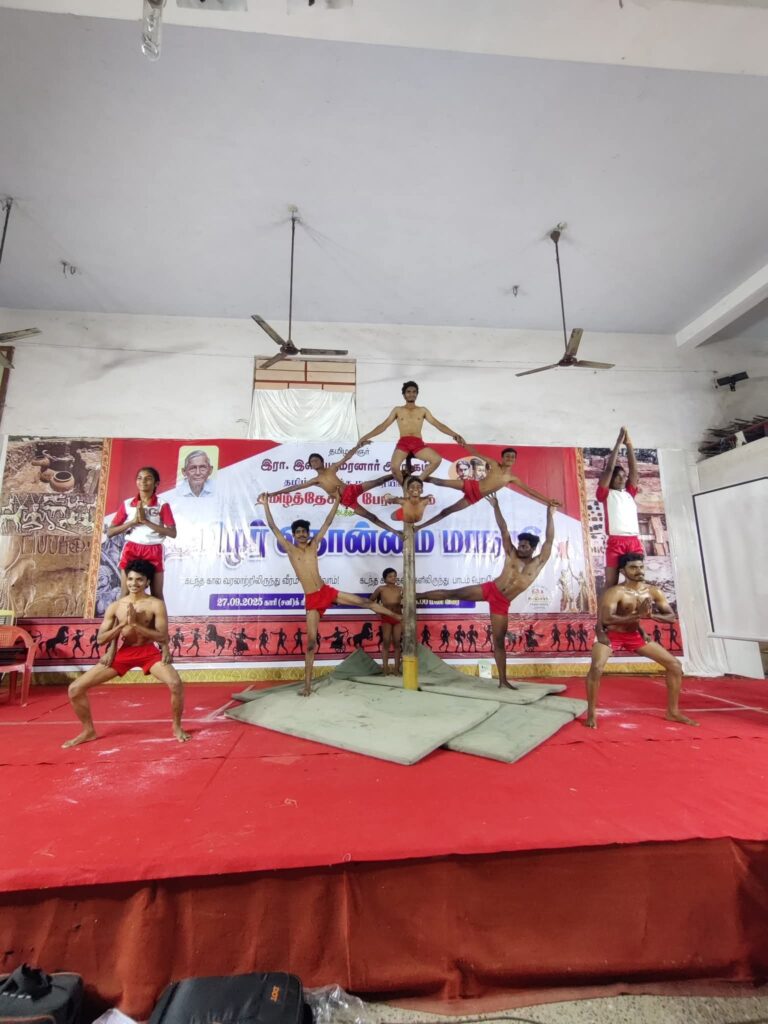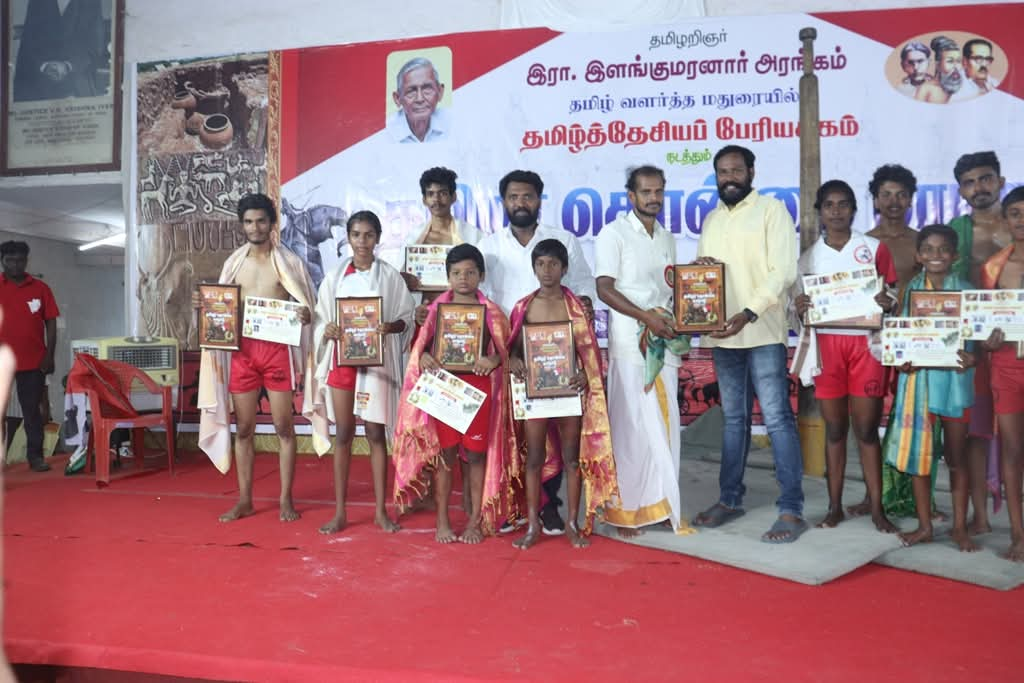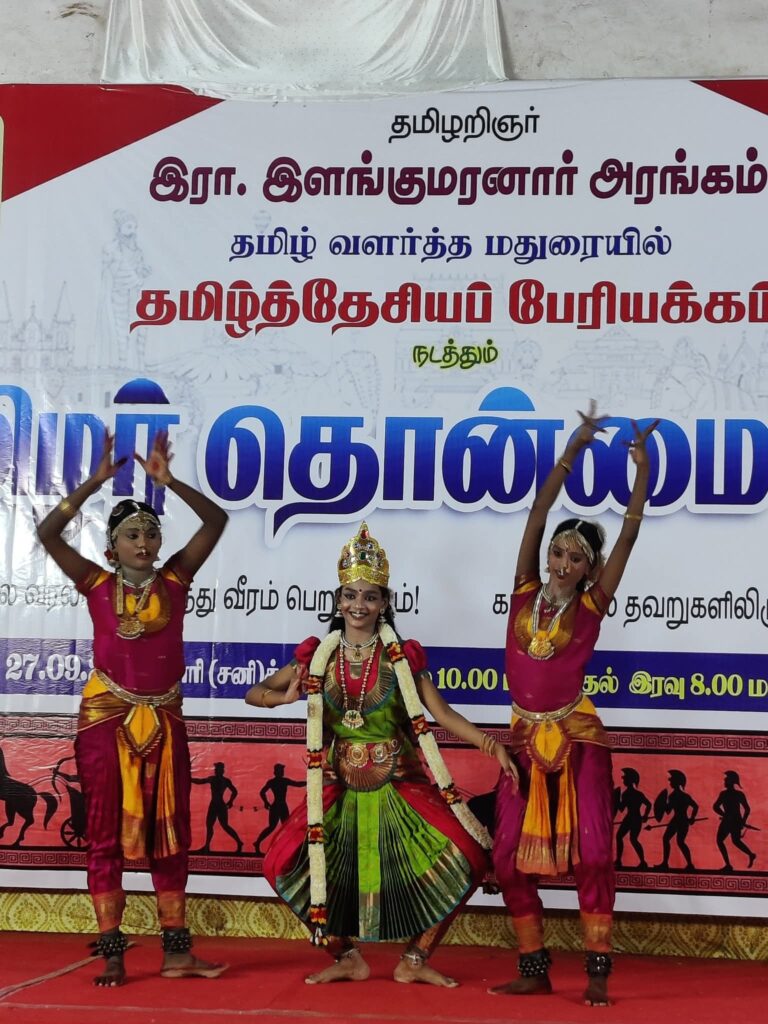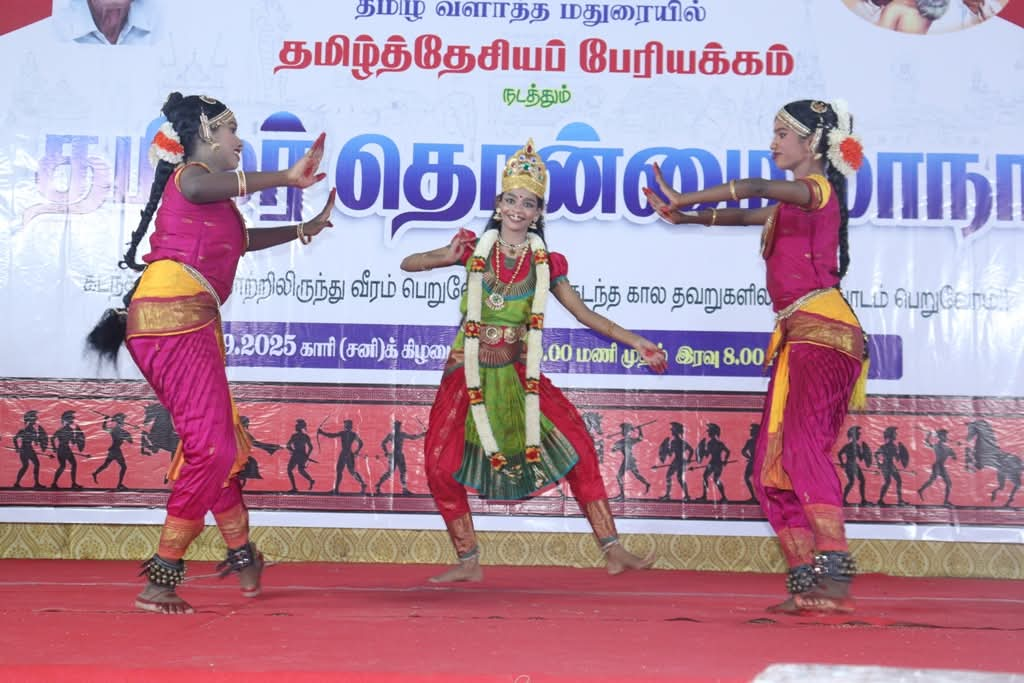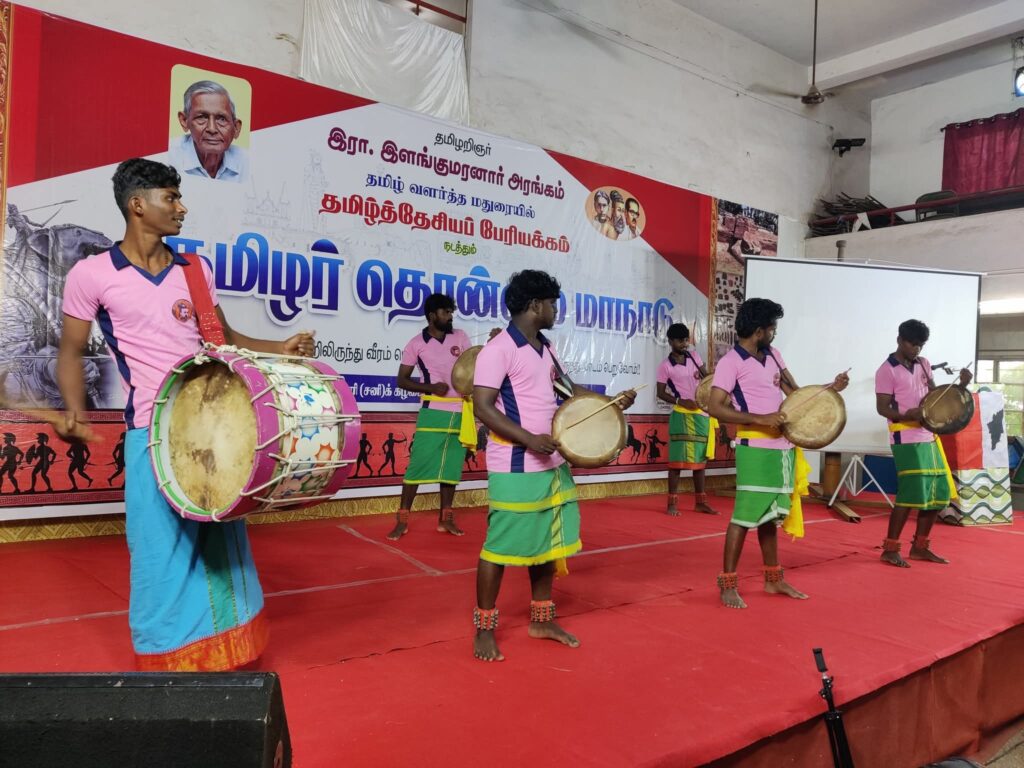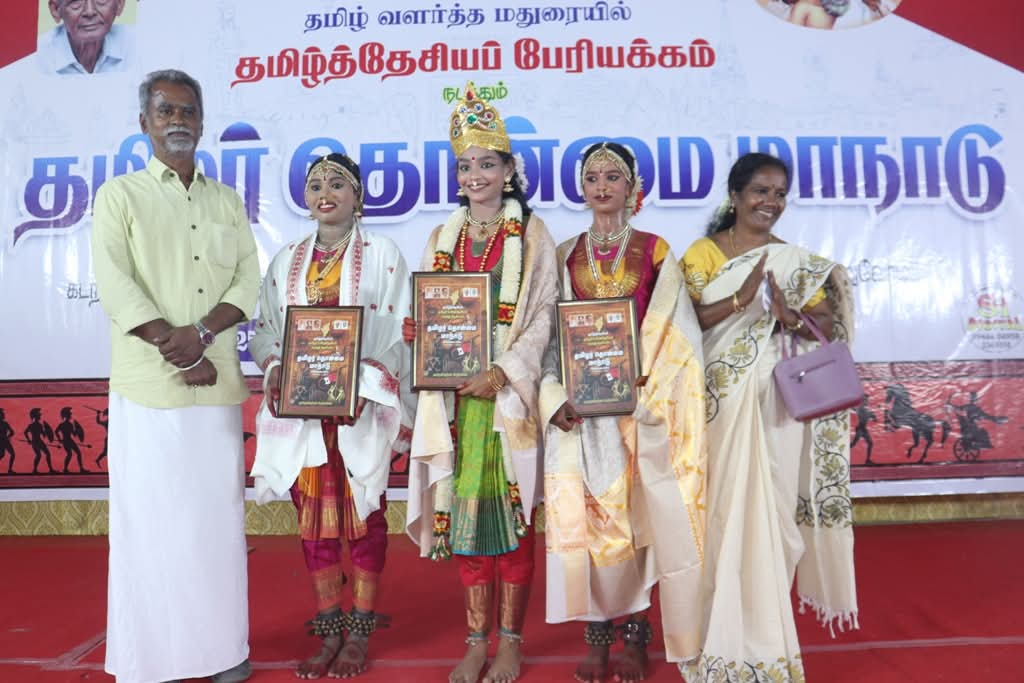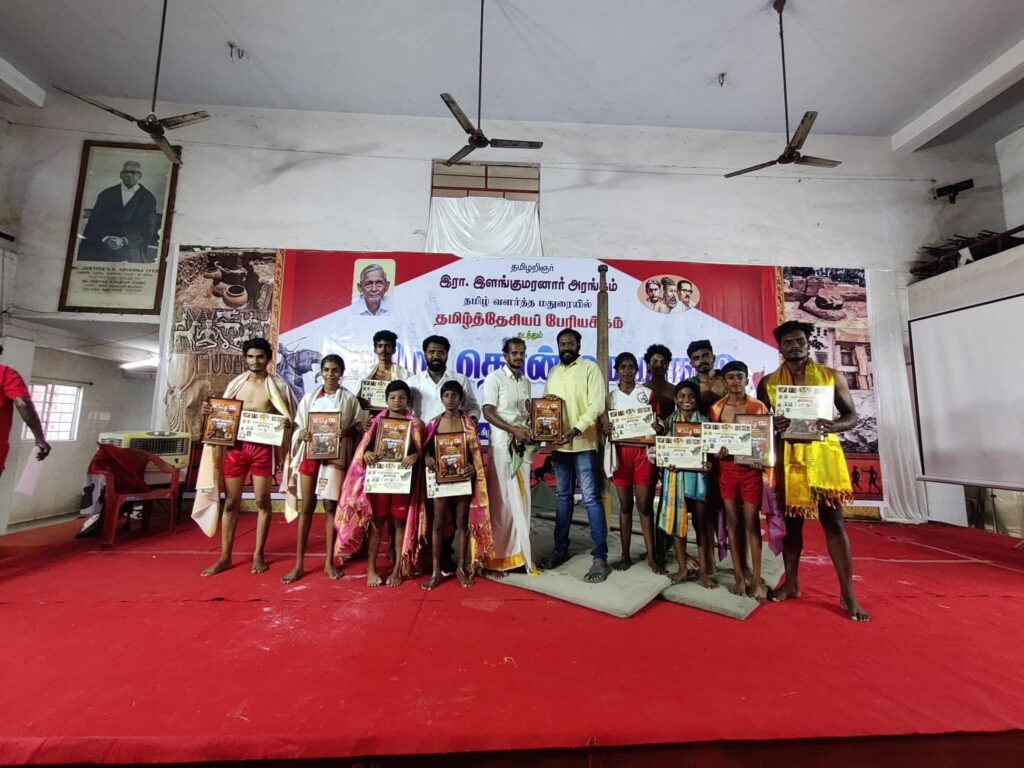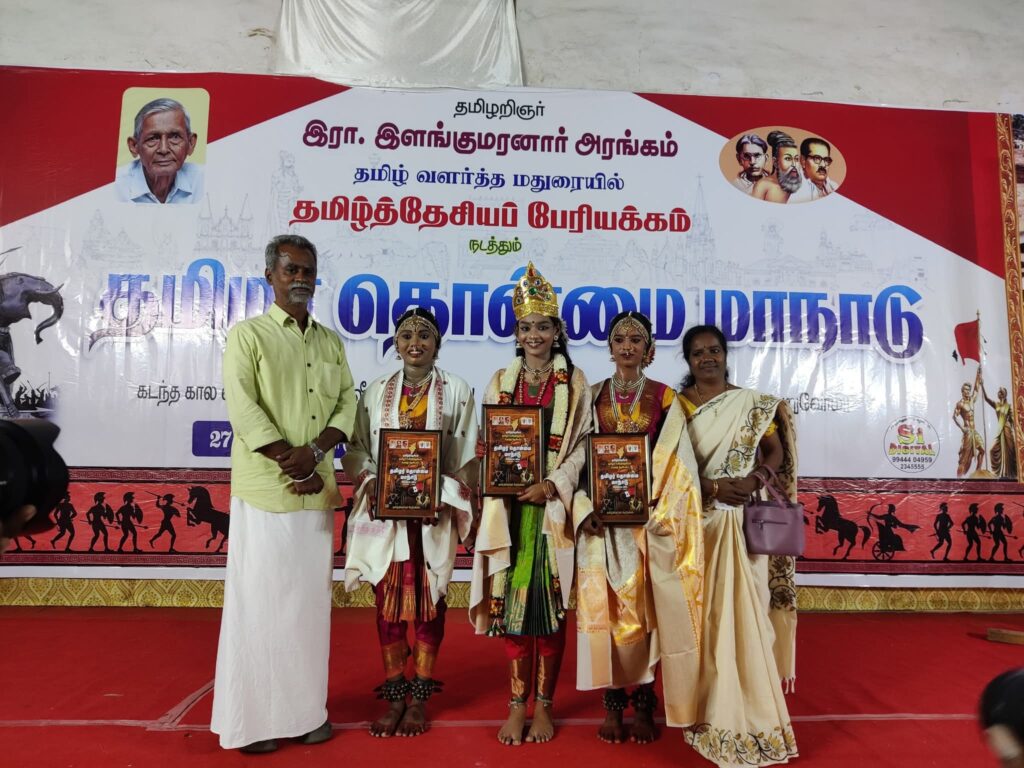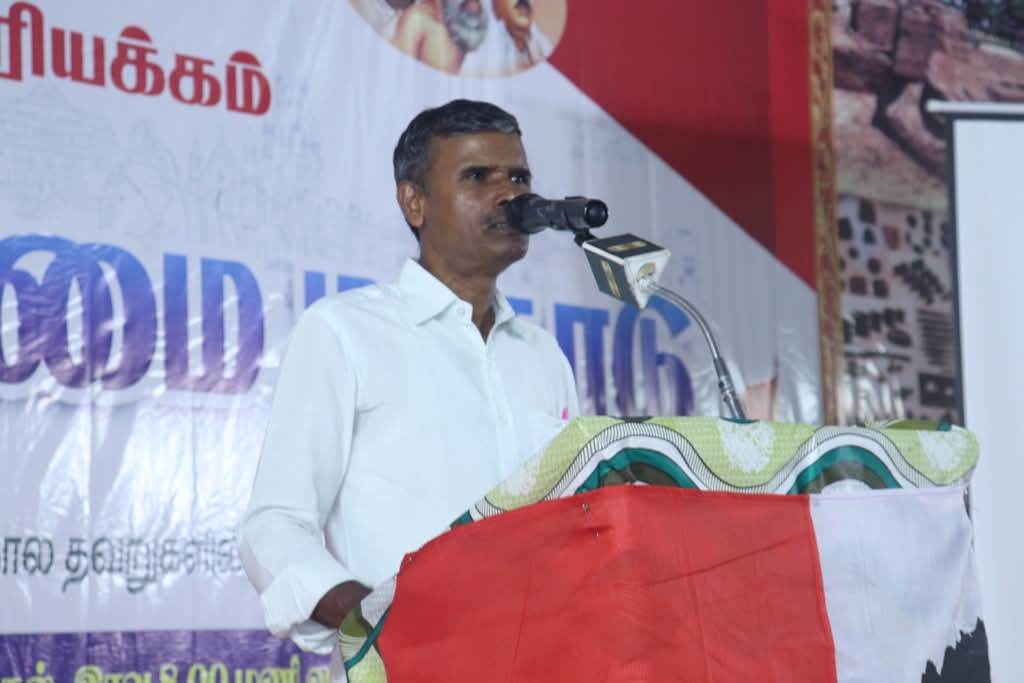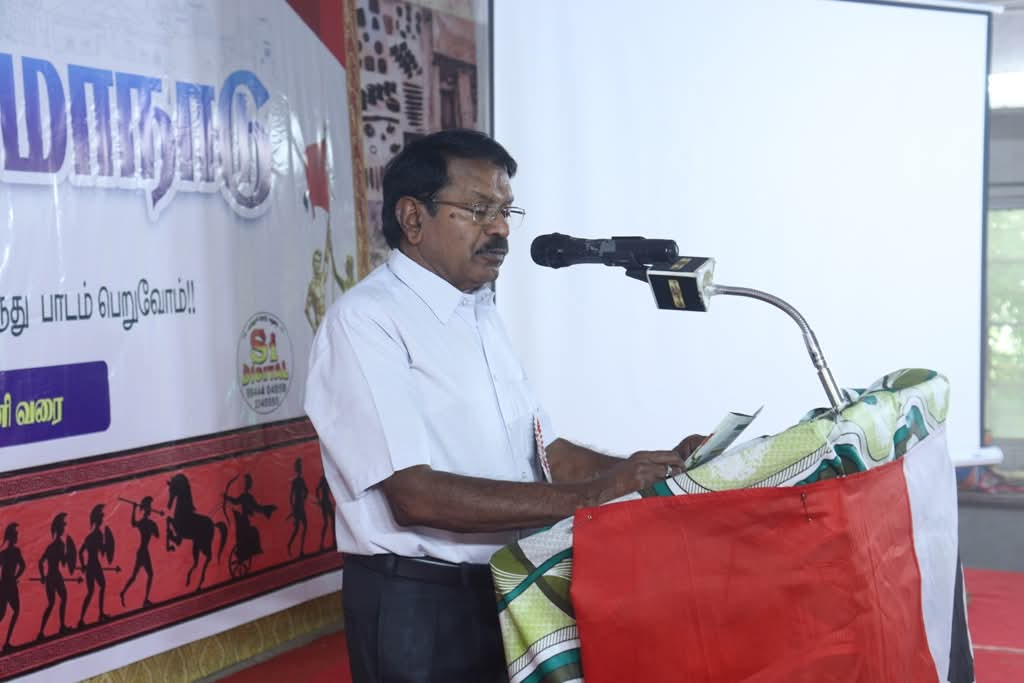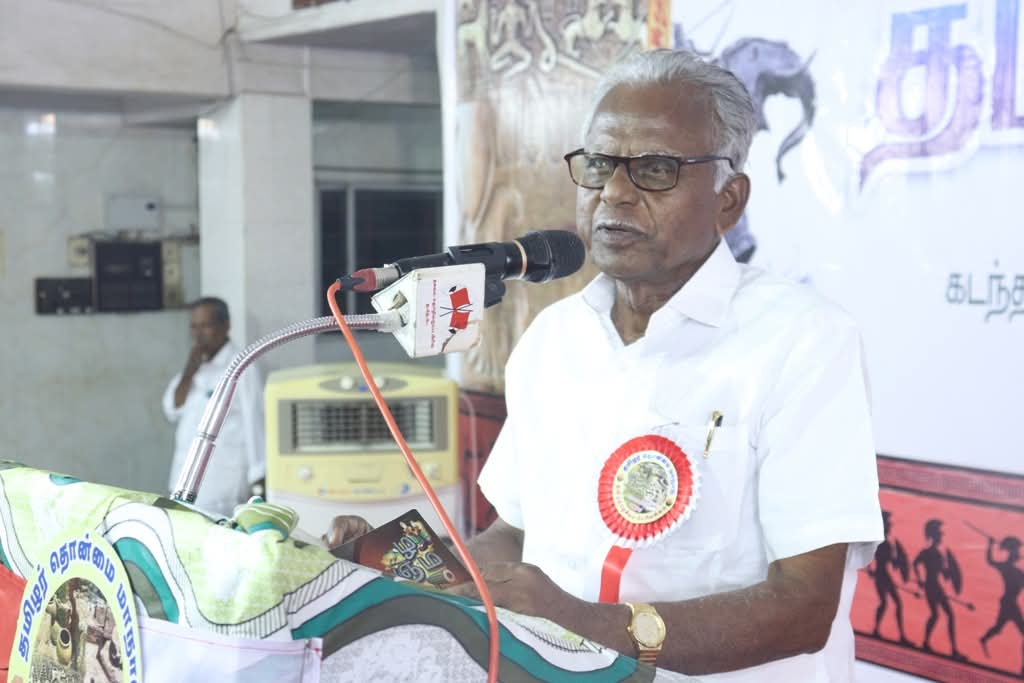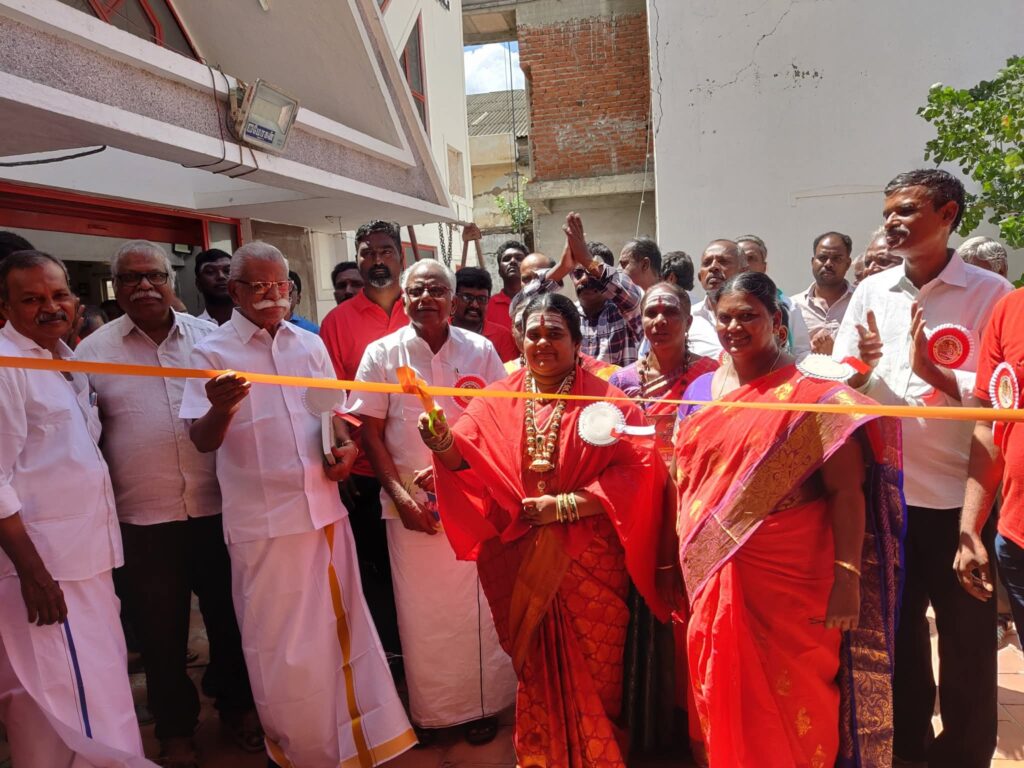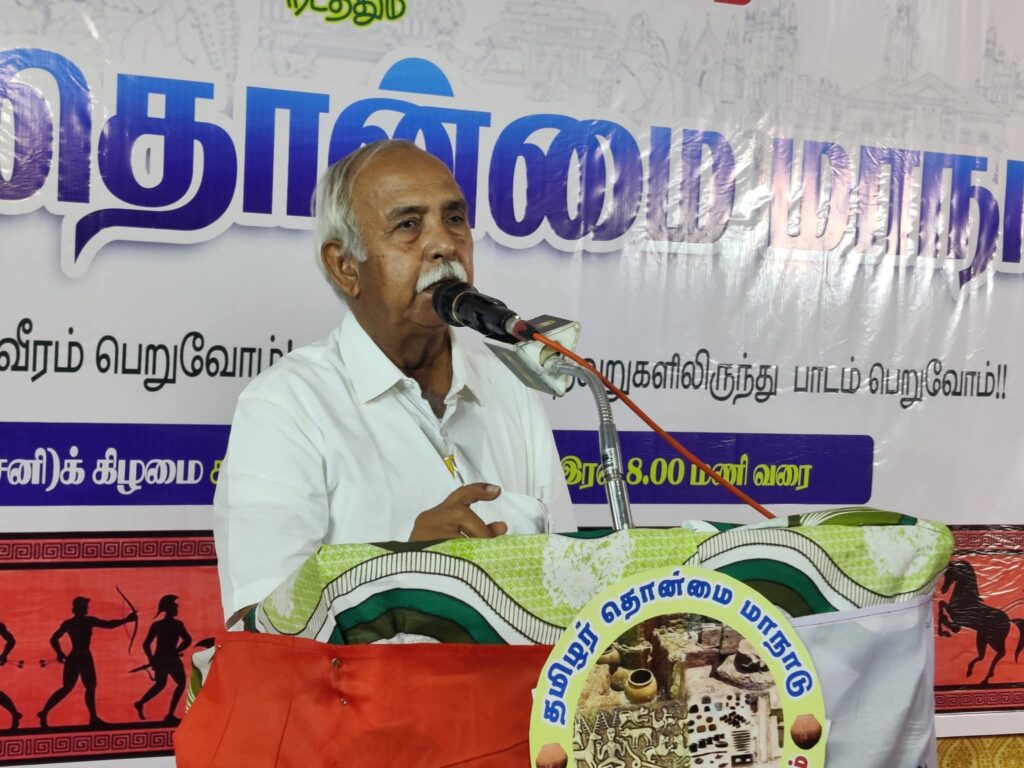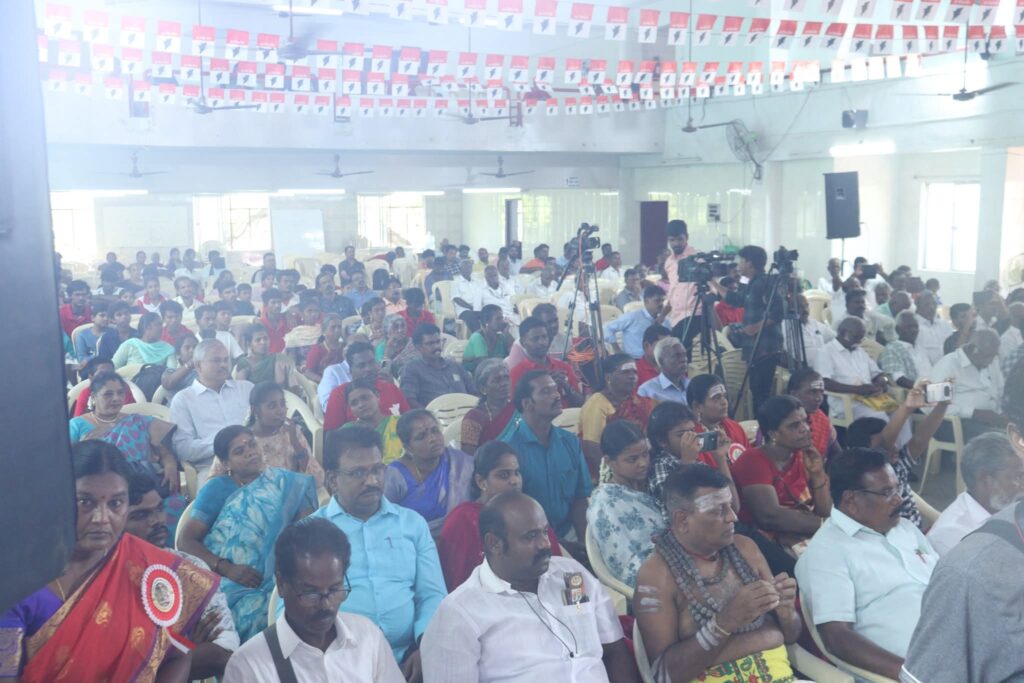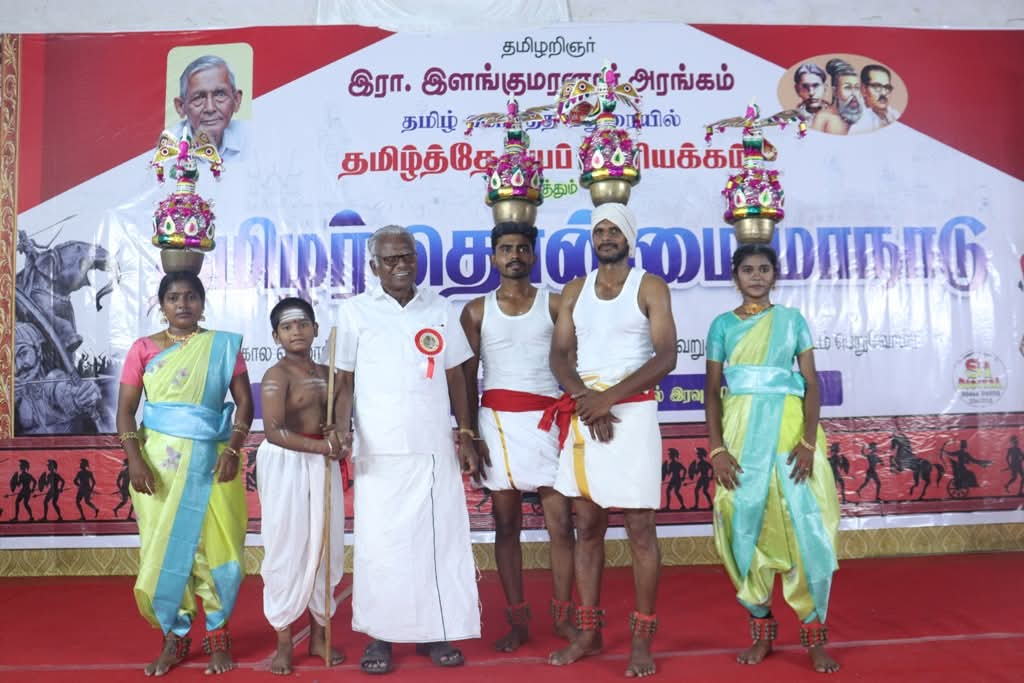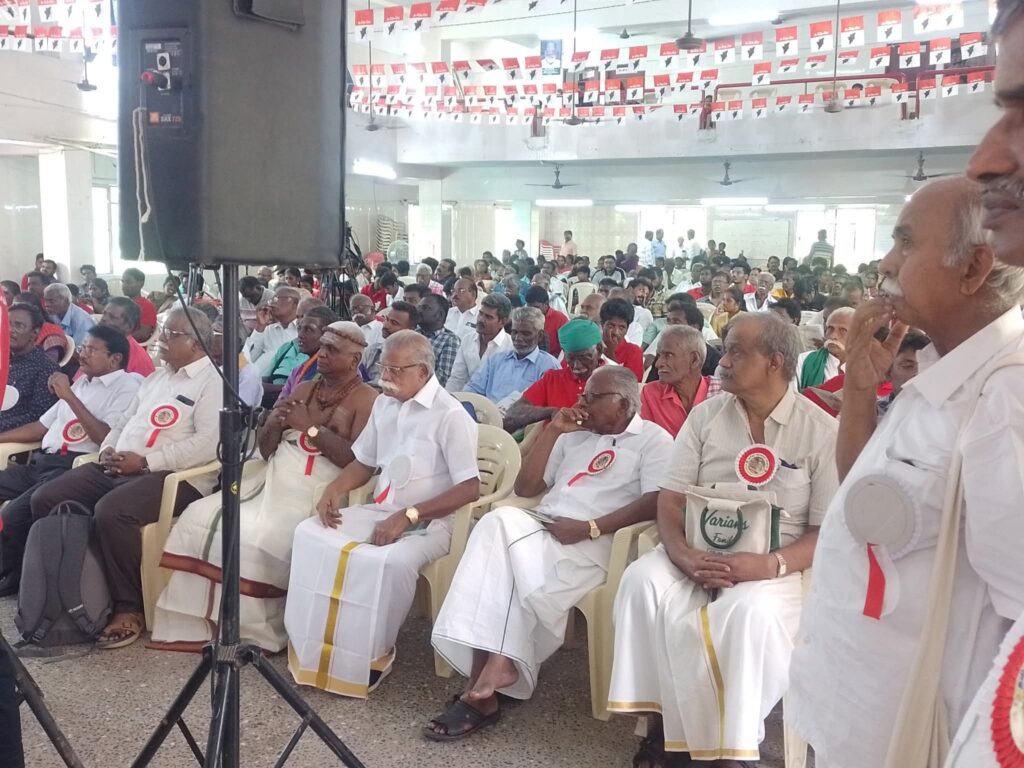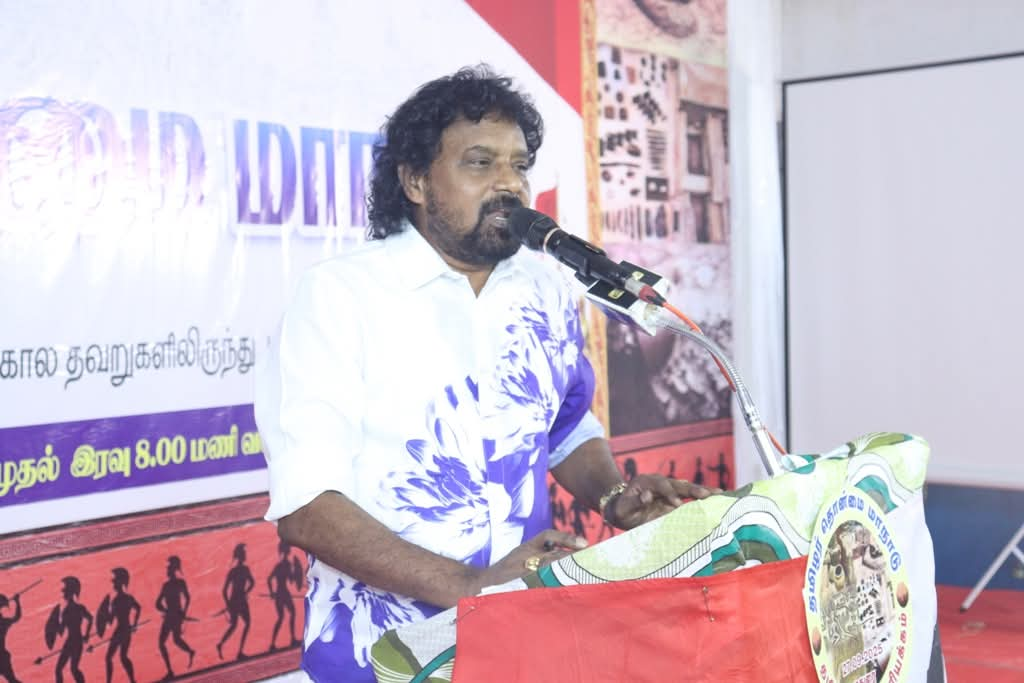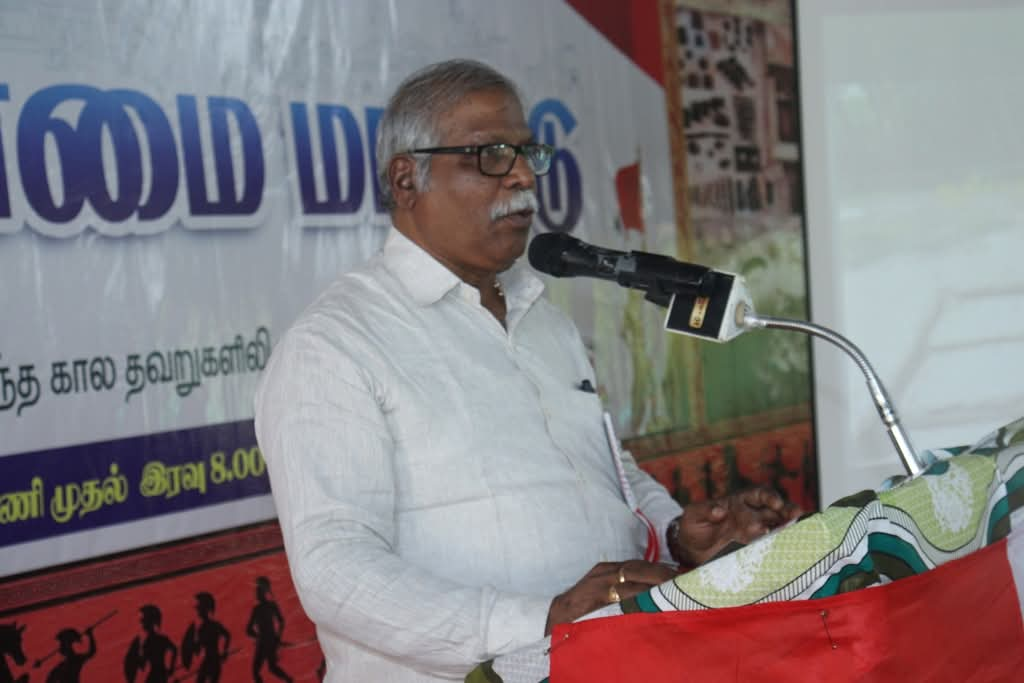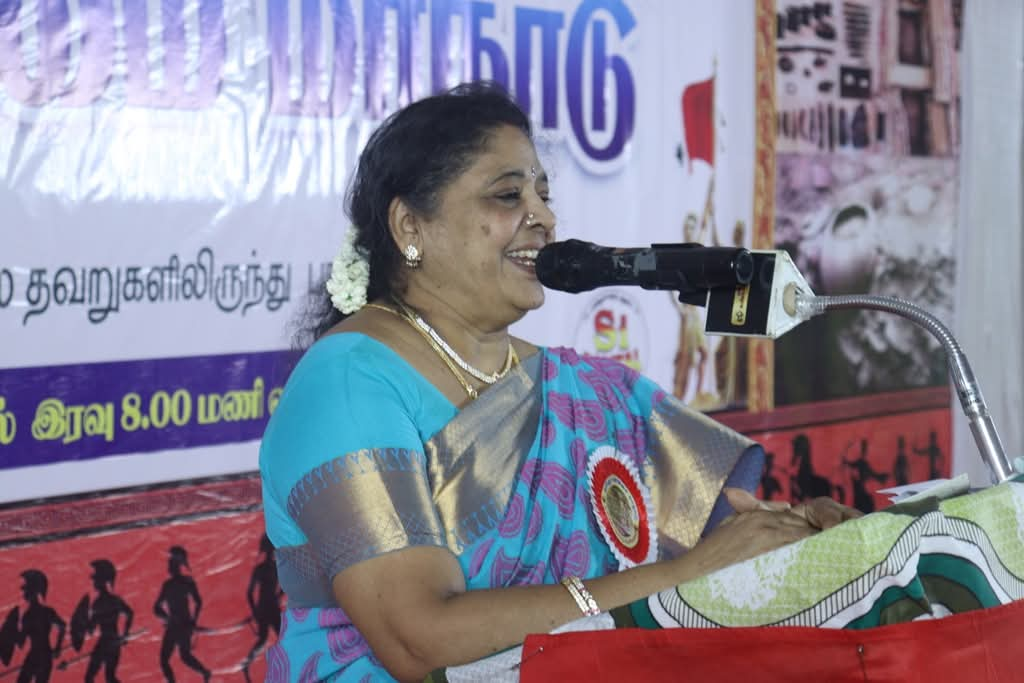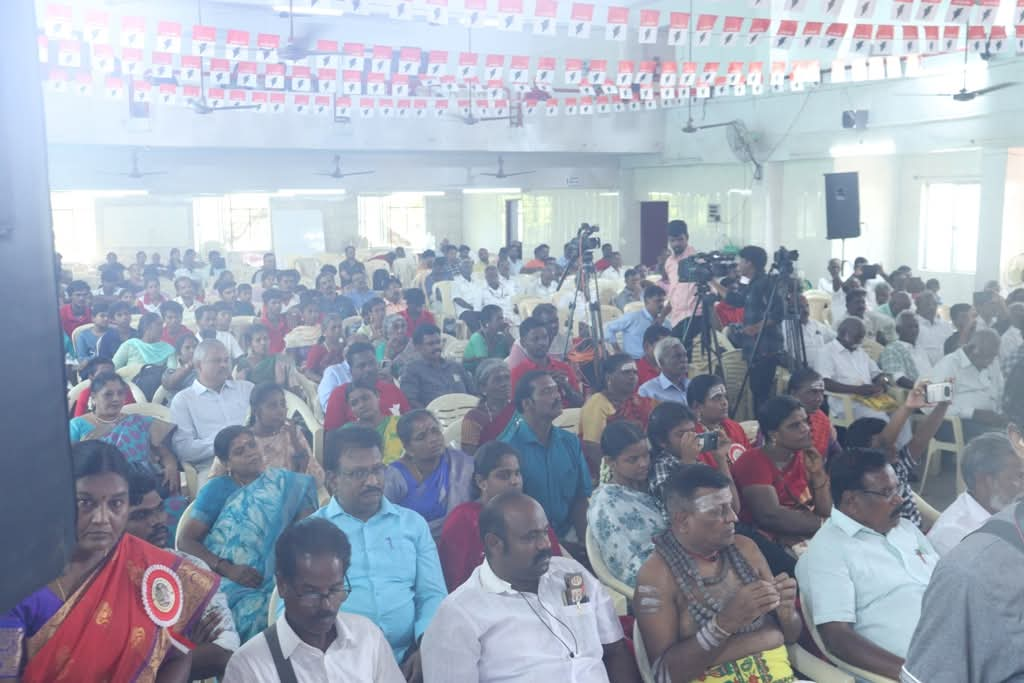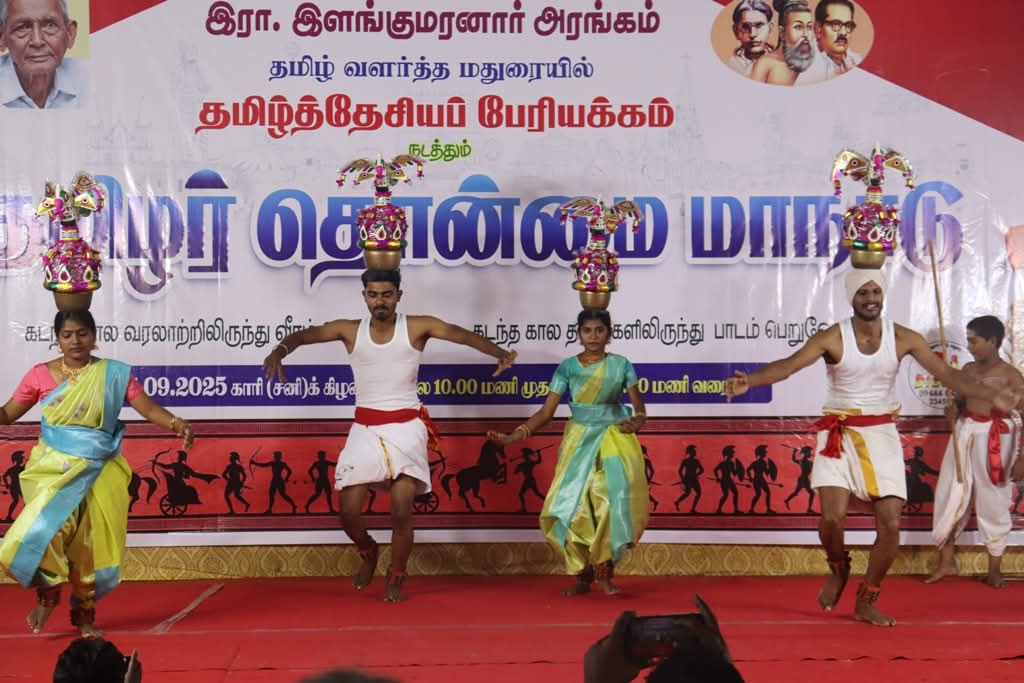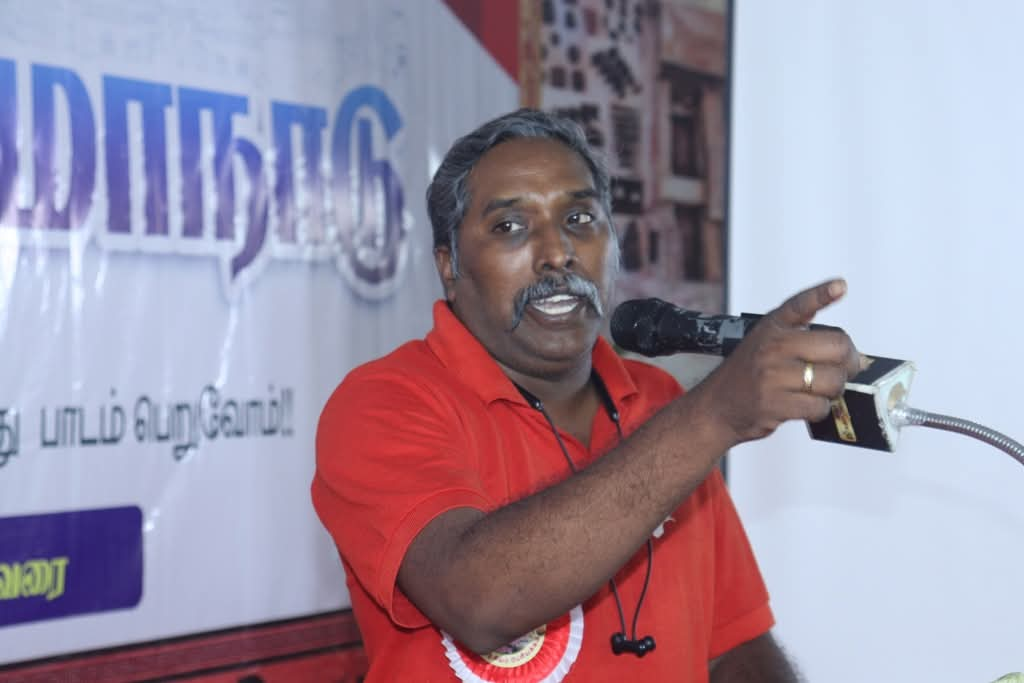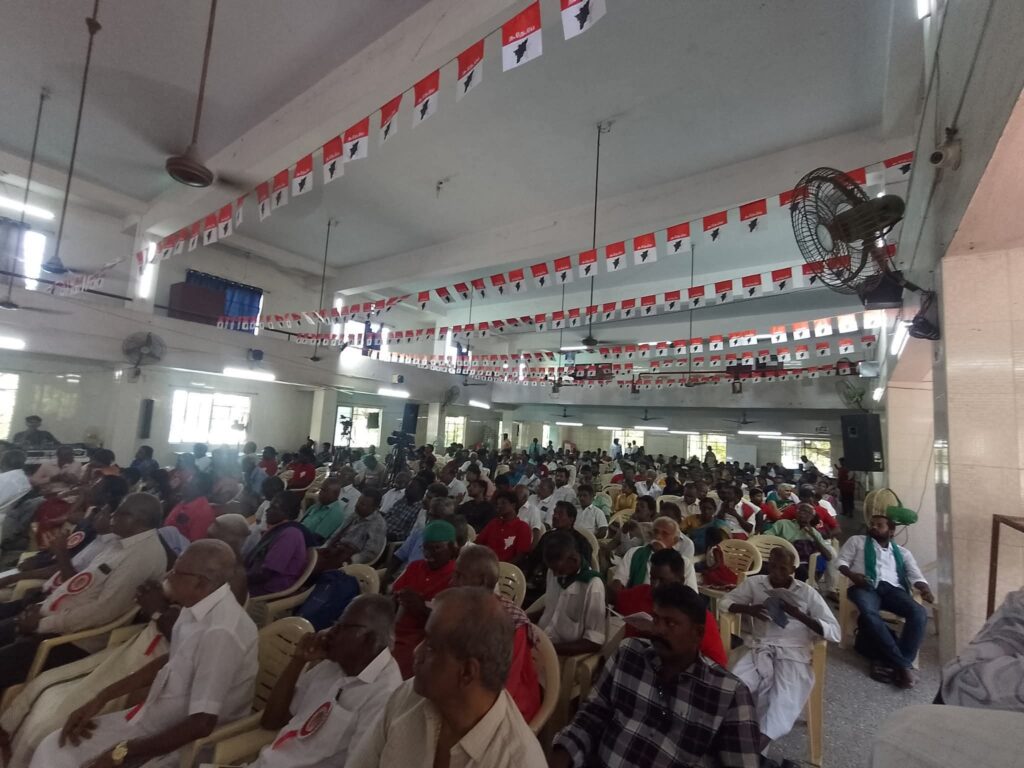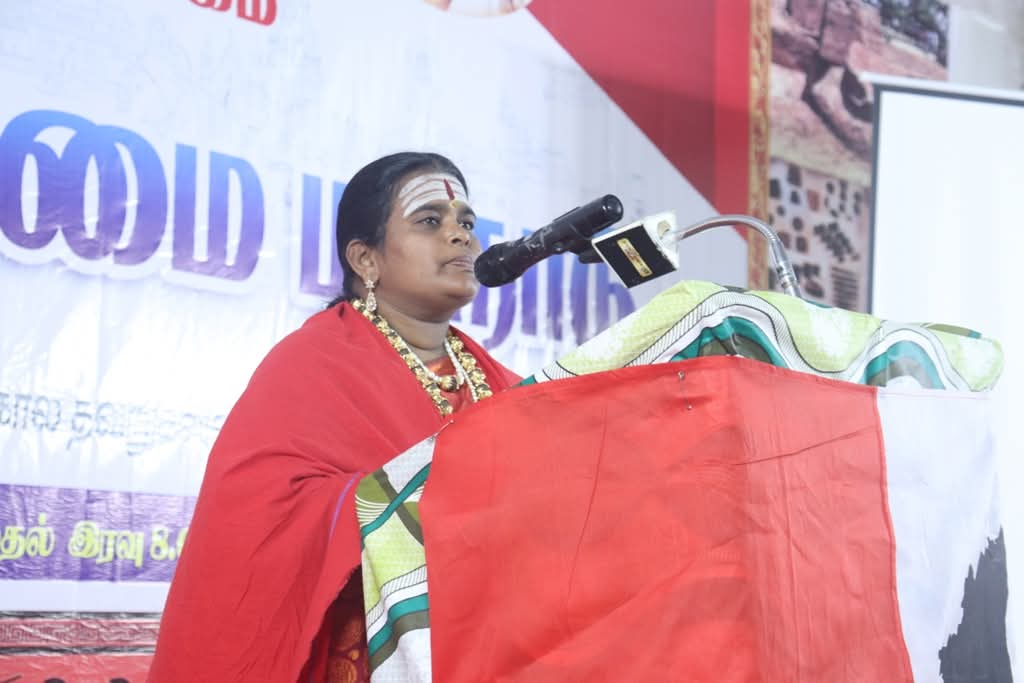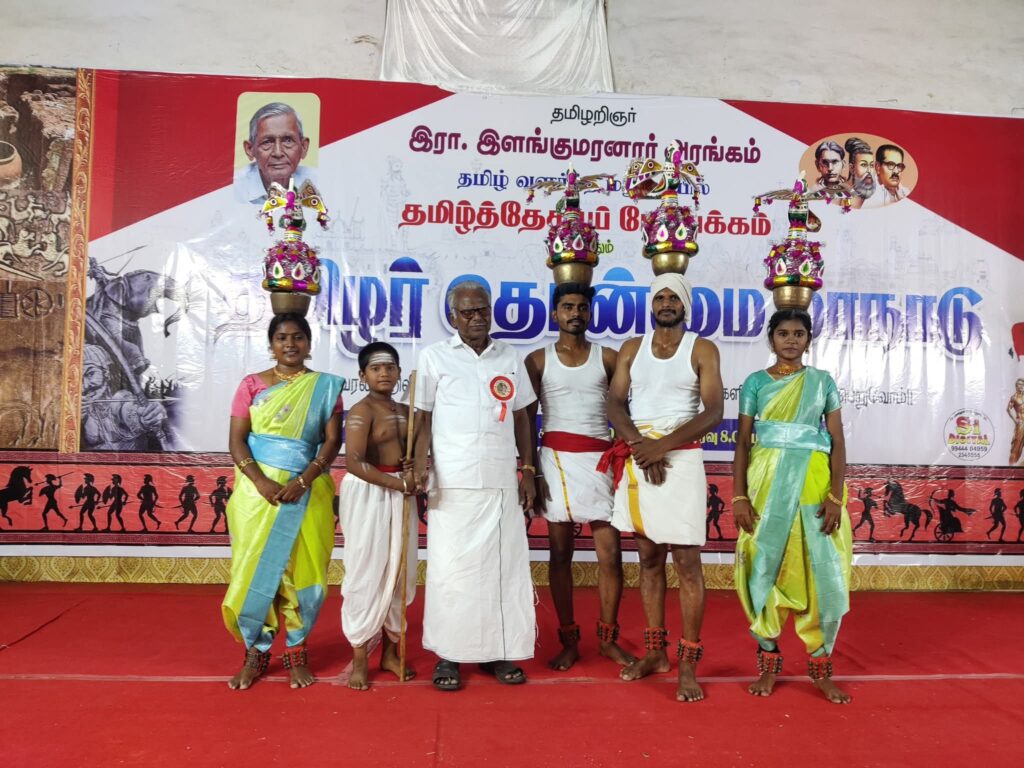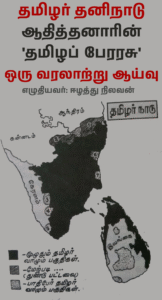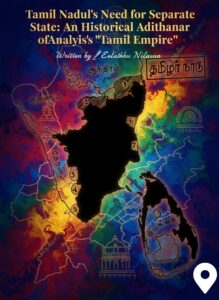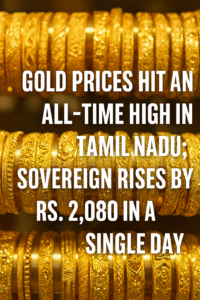Chapter 1: Introduction – The Historical Background of the Antiquity Conference
Madurai – the sacred land where Sangam literature was born. It was the capital of ancient Tamil rule and the cradle of Tamil political, cultural, and linguistic heritage.
Today, in a world where Tamil history is being erased and Tamil identity threatened, the Madurai Conference stands as a continuation of the Tamil Renaissance Movement. The seeds sown by Maraimalai Adigal, Bharathidasan, and scholar R. Ilangumaran have begun to yield fruit through this historic and political gathering in Madurai.

Chapter 2: Tamil Antiquity – Archaeological, Linguistic, and Genetic Evidence
➊. Excavations at Adichanallur, Keezhadi, Puyalkudi, Arichalur reveal that over 2600 years ago, Tamils already had urban life, written inscriptions, and an advanced trade civilization.
➋. Genetic studies led by Dr. Spencer Wells of Oxford University identified the Virumandi Genome (M130) – a 70,000-year-old lineage still alive in a Tamil youth, proving the unbroken genetic continuity of Tamils.
➌. Linguistic studies confirm Tamil as the world’s oldest living language, with roots older than Sanskrit and contemporary with the earliest civilizations.
Thus, Tamil antiquity is not a myth; it is a historical reality supported by archaeology, genetics, and linguistics.
Chapter 3: Tamil Antiquity in Comparison with World Civilizations
● Ancient civilizations like Egypt, Mesopotamia, and Harappa have disappeared.
● But the Tamil civilization continues as the only living ancient civilization in the world.
● Tamils engaged in overseas trade with the Roman Empire, Greece, China, the Red Sea, and Southeast Asia, controlling maritime commerce.
● The Indus Valley Civilization was not Aryan, but Dravidian-Tamil, as linguistic evidence in Indus seals shows words resembling Tamil (“minni”, “kottai”, etc.).
Chapter 4: The Historical-Political Importance of the Madurai Conference
The seven resolutions passed in the Madurai Tamil Antiquity Conference were historic:
➀. Archaeology must come under the authority of State governments, not the Central Indian government.
➁. Tamil Nadu must have the constitutional right to register “Tamil” as a national identity.
➂. The Indus Valley Civilization must be recognized as Tamil Civilization.
➃. No industrial complexes should be built in archaeological heritage regions.
➄. Historic Tamil statues in Madurai must never be removed or displaced.
➅. Tamil inscriptions and palm-leaf manuscripts preserved in Mysore must be brought to Chennai for protection.
➆. The Indian government must release the full reports of Adichanallur and Keezhadi excavations without distortion.
These resolutions are not mere demands; they are the political foundation for future Tamil self-determination.
Chapter 5: Tamil Antiquity – From Eelam to the World
●. Eelam (Tamil Eelam) was always part of Tamil maritime civilization. Sangam literature refers to it as “the radiant island.”
● Ancient Eelam was integrated into the Chola, Pandya, and Chera political sphere.
● Through Tamil seafaring, Tamil influence spread to Tamileelam, Malaysia, Singapore, Indonesia, Cambodia and beyond.
● Today, the Tamil struggle for freedom in Eelam is the modern continuation of that ancient Tamil identity and maritime heritage.
Chapter 6: The Antiquity Conference – Beginning of a New Historical Revolution
The slogan of the conference, “Recover the Old History – Create a New History”, is a charter for Tamil national movements.
The Madurai Antiquity Conference is not merely cultural but a scientific, political, and national declaration.
In Madurai, where Sangam once flourished, a new renaissance was declared, showing the path from antiquity to future nationhood.
Chapter 7: Conclusion – From Antiquity to Self-Determination
The Madurai Tamil Antiquity Conference is not just a commemoration but a historical document pointing to the future.
Though Tamils are the descendants of one of the oldest living civilizations, they remain politically stateless today.
This conference proved that Tamil antiquity is a scientific truth, a cultural treasure, and a political foundation.
As other civilizations disappeared, Tamil civilization continues to live – and will only find its true fulfillment when Tamils achieve political self-determination and sovereignty.
Thus, the Madurai Conference marks the beginning of that sacred journey.
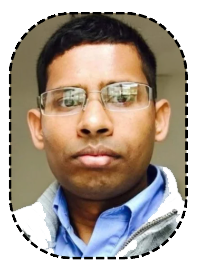
Written by: Eelaththu Nilavan
Tamil National Historian
Global Political, Economic, and Military Analyst
02/10/2025
